Capítulo 1 Introducción: Sean Bienvenidos Japonistasarqueológicos A Una Nueva Entrega Síntesis En



Capítulo 1 Introducción: Sean bienvenidos japonistasarqueológicos a una nueva entrega síntesis en la que abordaremos la transición del período Jomon al período Yayoi ¿Posible fusión cultural? dicho esto pónganse cómodos que comenzamos. - El cultivo del arroz, entró a japón por desde Corea a través de la península de Kyushu,dicho periodo tuvo lugar en el siglo IV d.c y tardaría 800 años en extenderse por el resto de Japón, excepto Hokkaido( por la dureza del clima) - Según: “El Museo Nacional de Historia Japonesa realizó una medición 1 de carbón vegetal adherido a la cerámica Yayoi y descubrió que el arroz más antiguo data del año 1000 (en 2002) - Fusión de la cultura Jomon y la cultura Izumo: El mito de los dioses Izumo que nacieron durante este período, están representados por Okuninushi dios de la tierra y Sukunahiko para el desarrollo de la vida. - Espero que os haya gustado y nos vemos en próximas publicaciones de japón, que pasen una buena semana. - 第1章 はじめに 縄文時代から弥生時代への移行-文化的融合の可能性-」をテーマに、日本考古学者による新しい総集編をお届けします。 ということで、どうぞごゆっくりお過ごしください。 - 稲作は紀元4世紀に朝鮮半島から九州半島を経て日本に入り、800年かけて北海道を除く日本全国に広まった(気候が厳しかったため)。 - による。"国立歴史民俗博物館が弥生土器に付着した炭の測定1を行ったところ、最も古い米は1000年(2002年)に遡ることが判明した"。 - 縄文文化と出雲文化の融合:この時代に生まれた出雲の神々は、大地の神であるオオクニヌシと生命を育むスクナヒコに代表される神話であり、この神話に登場する神々は、縄文文化、出雲文化を融合させたものである。 - 次の日本語の記事でお会いしましょう。 - Chapter 1 Introduction: Welcome to Japanesearchaeology to a new summary delivery in which we will address the transition from the Jomon period to the Yayoi period. Possible cultural fusion? Having said that, make yourself comfortable and let's begin. - The cultivation of rice entered Japan from Korea through the Kyushu peninsula. This period took place in the 4th century AD and would take 800 years to spread to the rest of Japan, except Hokkaido (due to the harsh climate). - According to: “The National Museum of Japanese History conducted a measurement 1 of charcoal attached to Yayoi pottery and discovered that the oldest rice dates back to the year 1000 (in 2002) - Fusion of Jomon culture and Izumo culture: The myth of the Izumo gods who were born during this period, are represented by Okuninushi, god of the earth and Sukunahiko for the development of life. - I hope you liked it and see you in future posts from Japan, have a good week.
More Posts from Noticiasarquelogicasjaponesas and Others



Sean bienvenidos japonistasarqueologicos a una nueva entrega arqueológica recién salida del horno, se ha descubierto en la prefectura de Nara espejo de bronce en forma de escudo hallado en el túmulo funerario de Tomio Maruyama, dicho esto pónganse cómodos desde que comenzamos. - Características : Mide 64 cm de largo y 31 cm de ancho. Data de finales del siglo IV y tiene 109 m de diámetro. En un examen que se realizó mediante rayos X fluorescentes al espejo con forma de escudo y estaba compuesto de cobre detectó la presencia de estaño, cobre y plomo. La superficie del espejo tenía rastros de que había sido pulido de forma suave. Los patrones geométricos, como es el patrón 'dragón', es una representación simplificada de una bestia divina china posiblemente tuvieran influencia china y los patrones de, los dientes de sierra, que se asemejan a hojas de sierra, se le aplican en la parte posterior. - En el mismo yacimiento se han encontrado: -85 espadas serpentinas en Japón y 4 en Corea del Sur. -La espada serpentina tiene una longitud total de 237, es tres veces más grande que el túmulo funerario de Uda Kitahara que es de 84,6 centímetros localizados en la ciudad de Uda, prefectura de Nara.
Kosaku Okabayashi, subdirector del Instituto Arqueológico de Kashihara, dijo en una conferencia de prensa: "El espejo de cobre en forma de escudo muestra el pensamiento flexible y la creatividad de la gente de la época, así como el alto poder de diseño. Prueba que el nivel técnico de producción fue más alto de lo que había imaginado". - El Túmulo funerario de Tomio Maruyama fue construido en la segunda mitad del siglo IV, dicho túmulo funerario tiene forma circular y es el más grande de Japón. La medición tridimensional con un láser reveló una estructura de tres etapas con un diámetro de 109 metros. La parte principal de la parte superior del montículo fue robada durante el período Meiji, y la piedra kuwagata, que se cree que fue desenterrada en ese momento, ha sido designada como una importante propiedad cultural nacional. - Espero que os guste y pasen una buena semana y nos vemos en próximas publicaciones de Japón.
-
日本の考古学者の皆さん、焼きたての新しい考古学的情報へようこそ。丸山富雄の古墳で見つかった盾の形をした青銅鏡が奈良県で発見されました。 - 特徴: サイズは長さ64cm、幅31cmです。 4 世紀末に造られた直径 109 m です。 銅製の盾型ミラーを蛍光X線で検査したところ、錫、銅、鉛の存在が検出されました。 鏡の表面には軽く磨いた跡があった。 「龍」文様などの幾何学模様は中国の影響を受けたと思われる中国の神獣を簡略化して表現したもので、背中にはノコギリの刃のような鋸歯文様が施されています。 - 同じサイトで次のものが見つかりました。 -蛇紋刀は日本に85本、韓国に4本。 蛇剣の全長は237で、奈良県宇陀市にある宇陀北原古墳の84.6センチメートルの3倍以上の大きさです。 橿原考古学研究所の岡林耕作副所長は記者会見で「盾形の銅鏡は、当時の人々の柔軟な思考と創造性、高いデザイン力を示している」と述べた。制作の技術レベルは想像以上でした。」 - 富雄丸山古墳は4世紀後半に築造された日本最大の円墳です。レーザーによる三次元計測により、直径109メートルの3段構造が判明した。明治時代に墳丘上部の主要部が盗まれ、その際に出土したとされる鍬形石は国の重要文化財に指定されている。 - 気に入っていただけて、良い一週間をお過ごしいただければ幸いです。今後の日本からの投稿でお会いしましょう。
-
Welcome, japanesearchaeologists, to a new archaeological delivery fresh from the oven, a bronze mirror in the shape of a shield found in the burial mound of Tomio Maruyama has been discovered in the Nara prefecture. That said, make yourself comfortable as we begin.
-
Characteristics : It measures 64 cm long and 31 cm wide. It dates from the end of the 4th century and is 109 m in diameter. In an examination that was carried out using fluorescent X-rays on the shield-shaped mirror and was composed of copper, the presence of tin, copper and lead was detected. The surface of the mirror had traces of being lightly polished. The geometric patterns, such as the 'dragon' pattern, is a simplified representation of a Chinese divine beast possibly having Chinese influence and the sawtooth patterns, which resemble saw blades, are applied to the back. . - In the same site they have been found:
-
85 serpentine swords in Japan and 4 in South Korea. -The serpentine sword has a total length of 237, it is three times larger than the burial mound of Uda Kitahara which is 84.6 centimeters located in the city of Uda, Nara prefecture. Kosaku Okabayashi, deputy director of the Kashihara Archaeological Institute, said at a press conference: "The shield-shaped copper mirror shows the flexible thinking and creativity of the people of the time, as well as the high design power. It proves that "The technical level of production was higher than I had imagined."
-
The Tomio Maruyama Burial Mound was built in the second half of the 4th century. This burial mound is circular in shape and is the largest in Japan. Three-dimensional measurement with a laser revealed a three-stage structure with a diameter of 109 meters. The main part of the upper part of the mound was stolen during the Meiji period, and the kuwagata stone, believed to have been unearthed at that time, has been designated as an important national cultural property.
-
I hope you like it and have a good week and see you in future posts from Japan.
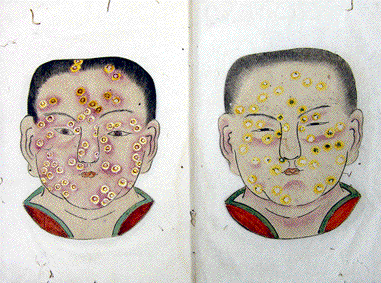
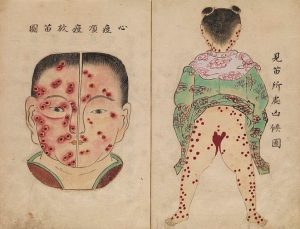
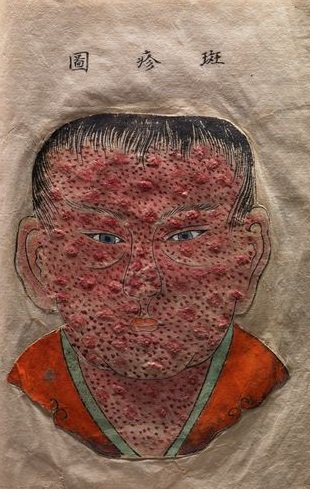


Sean bienvenidos a una nueva entrega de historia en esta ocasión, os comentaré una de las epidemias que azotó al país del Sol naciente una vez dicho esto póngase cómodos que empezamos. - La epidemia tuvo lugar en el periodo Nara (710-794) y la espidemia tubo lugar en 735-737.¿Conocían la epidemia? - Espero que os guste y nos vemos en próximas publicaciones, que pasen una buena semana. - Welcome to a new installment of history on this occasion, I will tell you about one of the epidemics that hit the country of the rising sun, having said that, make yourself comfortable and let's start. - The epidemic took place in the Nara period (710-794) and the epidemic took place in 735-737. Did they know about the epidemic? - I hope you like it and see you in future publications, have a good week. - この機会に、新たな歴史へようこそ。日出ずる国を襲った疫病の一つについてお話します。そうは言っても、気を楽にして始めましょう。 - 奈良時代(710年~794年)に流行し、735年~737年に流行しました。 彼らは疫病について知っていましたか? - 気に入っていただければ幸いです。今後の出版物でお会いできることを願っています。良い一週間をお過ごしください。


Sean bienvenidos a una nueva noticia de Arqueológia Japónesa para ir empezando el año dicho esto empezamos. - Los restos arqueológicos datan del periodo Yayoi(IV-III) al kofun(250-592), Los restos arqueológicos fueron hallados en la ciudad de Munakata en la prefectura de fukuoka en la isla de Kyūshū los restos ya se conocían desde la década de los años 70 en 2020, se encontraron 18 edificios casa pozo. - También fue encontrado un Ishibuchi¿Qué era este artilugio? era una herramienta usada en el período Yayoi para cosechar el arroz. - Espero que os haya gustado y nos vemos en otra noticia de Arqueológia Japónesa un cordial saludo. - 日本の考古学の新しい作品へようこそ。私たちが始めたこの年から始まります。 - 遺跡は弥生時代(IV-III)から古墳(250-592)までさかのぼります。 九州の福岡県宗像市で遺跡が発見されました。2020年の70年代からすでに知られている遺跡で、18棟の井戸が発見されました。 - 石渕も発見されましたこの矛盾は何でしたか? 弥生時代に稲刈りに使われた道具でした。 - よろしくお願いします。また、日本の考古学の別の話で、心からの挨拶を交えてお会いしましょう。 - Welcome to a new piece of Japanese Archeology to start the year with this we started. - Welcome to a new piece of Japanese Archeology to start the year with this we started. - The archaeological remains date from the Yayoi period (IV-III) to Kofun (250-592), The archaeological remains were found in the city of Munakata in the prefecture of Fukuoka on the island of Kyūshū.The remains were already known since the decade of the 70s in 2020, 18 well house buildings were found. - An Ishibuchi was also found What was this contraption? It was a tool used in the Yayoi period to harvest rice. - I hope you liked it and see you in another Japanese Archeology story, with a cordial greeting.
Fuente/ source/ソース: https://munakata.keizai.biz/photoflash/23/

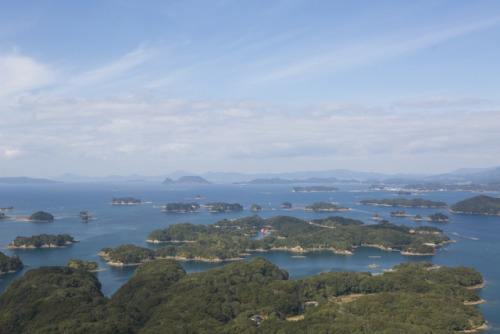
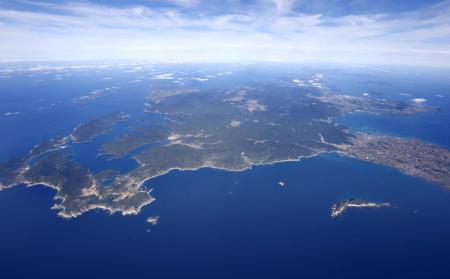

Sean bienvenidos japonistaarqueológicos, a una nueva actualidad del país del sol naciente. En este caso os comentaré que se han actualizado los datos del número de islas del archipiélago Japonés, dicho esto pónganse cómodos que empezamos. - La información viene de la agencia Geoespacial de Japón, el número de islas son de 14125 en todo el país, más del doble del número anunciado hasta ahora, en 1987 el cálculo era de 6852 islas. - El número de islas en cada prefectura Nagasaki 1479 Hokkaido 1473 Kagoshima 1256 Iwate 861 Okinawa 691. - ¿Qué opinan al respecto? Espero que tengan una buena semana y nos vemos en próximas publicaciones de Japón - 日出づる国から新しいニュースへようこそ。今回は、日本列島の島の数が更新されたことをお伝えします。 - 国土地理院からの情報ですが、日本全国の島の数は14125で、今まで発表されていた数(1987年は6852島)の2倍以上になっています。 - 各都道府県の島嶼数 長崎県 1479 北海道 1473 鹿児島県 1256 岩手県 861 沖縄県 691 - いかがでしょうか?今週も良い一週間をお過ごしください。また、今後の日本からの投稿でお会いしましょう。 - Welcome to a new update from the land of the rising sun. In this case I will tell you that we have updated the data on the number of islands in the Japanese archipelago, so make yourselves comfortable and let's get started. - The information comes from the Geospatial agency of Japan, the number of islands is 14125 in the whole country, more than double the number announced until now, in 1987 the estimate was 6852 islands. - The number of islands in each prefecture Nagasaki 1479 Hokkaido 1473 Kagoshima 1256 Iwate 861 Okinawa 691. - What do you think about it? I hope you have a good week and see you in future posts from Japan.
Tanque japonés, abatido por tropas norteamericanas, agosto del 42, guerra del Pacífico./Japanese tank, shot down by North American troops, August 42, Pacific War./米軍によって撃墜された日本の戦車(42年8月、太平洋戦争)。


Sean bienvenidos, japonistasarqueológicos, a una nueva entrega de religión nipona, una vez dicho esto pónganse cómodos qué empezamos. - Seguramente, todos hemos escuchado hablar del Budismo y Sintoísmo, dos religiones muy diferentes entre sí, ya que sus pilares religiosos no están hechos de la misma materia, voy a intentar resumir este tema para que todos podamos entenderlo mejor. ¿Cuándo llego el budismo a Japón? Llego en el siglo VI d.c en el período kofun también denominado protohistoria, lo que no voy a negar y lo que todos sabemos es que china, India y otros países influenciaron a Japón y eso lo podemos ver todavía a día de hoy. - Pero hace poco vi el uso de la palabra Sincretismo religioso, lo cual, me parece el término de lo menos apropiado, ¿Qué significa sincretismo? Unión, fusión e hibridación, casos más claros, lo podemos ver en Latinoamérica y con Grecia y Roma. Por lo cual el término más apropiado para este caso sería coexistencia o convivencia, además en el periodo meiji hubo una reforma religiosa para separar ambas religiones y convivencia al sintoísmo, religión del estado, a esto se le llama Shinbutsu bunri en hiragana sería:(しんぶつぶんり) ¿Qué opinan ustedes? - Espero que os haya gustado y nos veamos en próximas publicaciones que pasen una buena semana. - Primera foto :santuario Heian Jingu(Kyoto) Segunda foto: Templo Rengeoin( Kyoto) - Welcome, archaeological Japanists, to a new installment of Japanese religion, having said that, make yourself comfortable as we begin. - Surely, we have all heard of Buddhism and Shintoism, two very different religions from each other, since their religious pillars are not made of the same material, I am going to try to summarize this topic so that we can all understand it better. When did Buddhism arrive in Japan? It arrived in the 6th century AD in the Kofun period also called protohistory, which I will not deny and what we all know is that China, India and other countries influenced Japan and we can still see that today. - But I recently saw the use of the word religious syncretism, which seems to me to be the least appropriate term. What does syncretism mean? Union, fusion and hybridization, clearest cases, we can see it in Latin America and with Greece and Rome. Therefore, the most appropriate term for this case would be coexistence or coexistence. In addition, in the Meiji period there was a religious reform to separate both religions and coexistence with Shintoism, the state religion. This is called Shinbutsu bunri in hiragana: (しん ぶつぶんり) What do you think? - I hope you liked it and we'll see you in future posts and have a good week. - First photo: Heian Jingu Shrine (Kyoto) Second photo: Rengeoin Temple (Kyoto) - 考古学者の日本主義者の皆さん、日本の宗教の新しい記事へようこそ。そうは言っても、安心して始めてください。 - 確かに、私たちは皆、仏教と神道という、互いにまったく異なる 2 つの宗教について聞いたことがあるでしょう。それらの宗教的支柱は同じ素材で作られていないため、私たち全員がよりよく理解できるように、このトピックを要約してみようと思います。 仏教はいつ日本に伝わったのでしょうか? それは、原史時代とも呼ばれる古墳時代の西暦 6 世紀に到来しました。私はそれを否定しません。また、中国、インド、その他の国々が日本に影響を与えたことは誰もが知っており、今日でもそれを見ることができます。 - しかし、私は最近、宗教的混合主義という言葉が使われているのを目にしましたが、これは私にとって最も不適切な用語であるように思えます。 結合、融合、ハイブリッド化の最も明確な事例は、ラテンアメリカやギリシャ、ローマで見られます。 したがって、この場合には「共存」または「共生」という言葉が最も適切でしょう。また、明治時代には両宗教を分離し、国教である神道と共存する宗教改革が行われました。これをひらがなで「神仏分理」といいます。ぶつぶんり)どう思いますか? - 気に入っていただければ幸いです。今後の投稿でお会いしましょう。良い一週間をお過ごしください。 - 1枚目の写真:平安神宮(京都) 写真2枚目:蓮華王院(京都)

Sean bienvenidos, japonistasarqueológicos a una nueva entrega, en esta ocasión haré una introducción a que es la arqueología asistida a la arquitectura, una vez dicho esto pónganse cómodos que empezamos. - La arqueología, abarca muchos campos de estudios y épocas, desde la prehistoria hasta nuestro día, pero no estudia dinosaurios, lo siento, de eso se encarga la paleontología. En este caso, ¿Qué entendemos por Arqueología aplicada a la arquitectura?: pues atravez de sus restos arqueológicos nos permiten saber como eran las distintas arquitecturas de las distintas épocas. Por ejemplo: la arquitectura greco-romana y de la era vikinga, pero en este caso nos trasladamos al país del sol naciente y para que lo puedan entender mejor pongamos algunos ejemplos como las pagodas o edificios budistas e incluso casas de tipo foso en el periodo Jomon, solo por mencionar algunas cosas. - Gracias a esta disciplina y si la combinamos con la Arqueología 3D, pues el resultado es que con recreaciones virtuales o con la arqueología experimental nos permiten entender como se llevaron a cabo la labor de construcción y de abandono, etc. - Espero que os guste y nos vemos en próximas publicaciones, que pasen una buena semana. - Welcome, Japanese archaeologists to a new installment, this time I will make an introduction to what assisted archeology is to architecture, once said this, make yourself comfortable and let's start. - Archeology covers many fields of study and times, from prehistory to the present day, but it does not study dinosaurs, sorry, paleontology takes care of that. In this case, what do we understand by Archeology applied to architecture? Well, through its archaeological remains they allow us to know what the different architectures of the different eras were like. For example: Greco-Roman architecture and the Viking era, but in this case we move to the country of the rising sun and so that they can understand it better, let's give some examples such as pagodas or Buddhist buildings and even moat-type houses in the period Jomon, just to mention a few things. - Thanks to this discipline and if we combine it with 3D Archaeology, the result is that with virtual recreations or with experimental archeology they allow us to understand how the construction and abandonment work was carried out, etc. - I hope you like it and see you in future publications, have a good week. - 日本の考古学者の皆さん、新しい記事へようこそ。今回は、建築に対する考古学支援とは何かについて紹介します。これを言ったら、安心して始めましょう。 - 考古学は先史時代から現代に至るまで、多くの研究分野と時代をカバーしますが、恐竜については研究しません。申し訳ありませんが、古生物学がそれを担当します。 この場合、考古学を建築に適用すると、私たちは何を理解できるのでしょうか? そうですね、考古学的遺跡を通じて、さまざまな時代のさまざまな建築がどのようなものであったかを知ることができます。 例: ギリシャ・ローマ建築とバイキング時代。この場合は日出ずる国に移ります。理解が深まるように、塔や仏教の建物、さらには堀型の家などの例を挙げましょう。縄文時代のことについて少しだけ触れておきます。 - この専門分野のおかげで、これを 3D 考古学と組み合わせると、仮想レクリエーションや実験考古学を使用して、建設や放棄作業がどのように行われたのかなどを理解できるようになります。 - 気に入っていただければ幸いです。今後の出版物でお会いできることを願っています。良い一週間をお過ごしください。




Sean bienvenidos japonistasarqueologícos a una nueva entrega para finalizar el Obon se realizan los llamados Gozan no Okuribi, tambien conocido como Daimonji se realizan el día 16 de agosto. - Espero que os guste y nos vemos en próximas publicaciones, que pasen una buena semana. - Welcome Japanese archaeologists to a new installment to end the Obon, the so-called Gozan no Okuribi, also known as Daimonji, are held on August 16. - I hope you like it and see you in future publications, have a good week. - 日本の考古学者の皆さん、お盆の締めくくりとなる新たな行事、いわゆる五山の送り火(大文字としても知られています)が 8 月 16 日に開催されます。 - 気に入っていただければ幸いです。今後の出版物でお会いできることを願っています。良い一週間をお過ごしください。 -






sean bienvenidos japonistasarqueológicos, en este video que he encontrado en youtube, podemos ver el Kyudo ( きゅうどう) un tipo de arte marcial que se originó en Japón en el siglo XII, cuando Minamoto no Yoritomo estableció el shogunato de Kamakura, se estableció la moral samurái de alcanzar alturas espirituales a través del entrenamiento en tiro con arco y caballos. - Espero que os haya gustado y nos vemos en próximas publicaciones de Japón ¿ Lo conocían? - 考古学的な日本のファンを歓迎します。私が YouTube で見つけたこのビデオでは、源頼朝が鎌倉幕府を確立した 12 世紀に日本で生まれた武道の一種である弓道 (きゅうどう) を見ることができます。アーチェリーと馬のトレーニングを通じて精神的な高みに到達します。 - 気に入っていただけて、今後の日本の出版物でお会いできることを願っています。 - Welcome archeological Japanese fans, in this video that I found on YouTube, we can see Kyudo (きゅうどう) a type of martial art that originated in Japan in the 12th century, when Minamoto no Yoritomo established the Kamakura shogunate, morality was established samurai to reach spiritual heights through training in archery and horses. - I hope you liked it and see you in future Japan publications. Did you know him?
El origen de un país y su prehistoria, un paseo por la historia del país del sol naciente. /国の成り立ちと先史、日出ずる国の歴史を歩く。/The origin of a country and its prehistory, a walk through the history of the country of the rising sun.
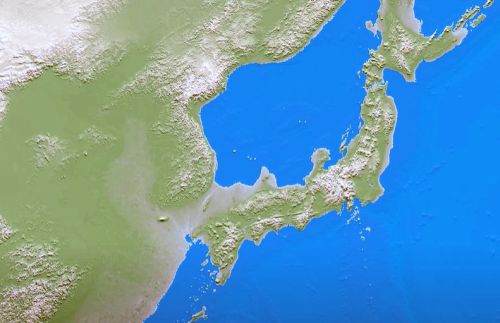



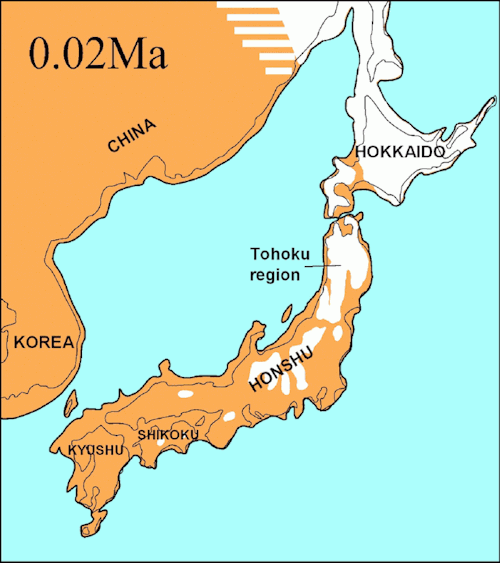

Sean bienvenidos, japonistasarqueológicos, a una nueva entrega de arqueología nipona e historia nipona, una vez dicho esto pónganse cómodos qué empezamos.
-
En los capítulos 1,2,3:Hablamos de: ¿Cuándo llegaron por primera vez los homínidos a Japón? ¿De qué vivían? Hablamos un poco de su geografía, de las cuatro eras glaciales, también se mencionó el holoceno. Empezamos a hablar del pleistoceno, y de cuando empezó la prehistoria de hace 2,5 (esta fecha está desfasada actualmente ronda 4 millones, por los hallazgos de industria lítica) a 7 millones de años. Comentamos algunos homínidos: Homo neanderthalensis, Homo heidelbergensis, homo ergaster entre otros homínidos, comentamos como África es la cuna de la humanidad, y su diversidad de dispersiones migratorias. También se comentó la llegada los homínidos a Okinawa hace 30.000-40.000 años y los Ainus como posibles primeros pobladores. Seguimos hablando del pleistoceno, estuvimos explicando un poco sobre el pleistoceno, se mencionó un poco la formación del archipiélago, mencioné mi posible teoría y al final terminamos con ¿Cómo se llaman las placas tectónicas que forman el archipiélago?
-
Espero que os guste y nos vemos en próximas publicaciones, que pasen una buena semana.
-
日本の考古学者諸君、ようこそ、日本考古学と日本史の新連載へ!さあ、くつろいで、始めよう。
第1章、第2章、第3章では、「ヒト科の動物はいつ日本にやってきたのか?地理、4つの氷河期、完新世についても少し触れました。更新世について話し始め、先史時代が始まった250万年前(この年代は、石器産業の発見により、現在では約400万年古くなっている)から700万年前について話した。ホモ・ネアンデルターレンシス、ホモ・ハイデルベルゲンシス、ホモ・エルガスターなどのホミノイドについて解説し、アフリカが人類発祥の地であること、その移動分散の多様性について述べた。また、3万~4万年前の沖縄へのヒト科動物の到着と、最初の入植者である可能性のあるアイヌ人についても議論した。私たちは更新世について話を続け、列島の形成について少し説明し、私が可能性のある説を述べ、最後にこう締めくくった。 列島を形成しているプレートの名前は?
それではまた、良い一週間を。
-
Welcome, Japanese archaeologists, to a new instalment of Japanese archaeology and Japanese history, so make yourselves comfortable and let's get started.
In chapters 1,2,3:We talk about: When did hominids first arrive in Japan? What did they live on? We talked a little bit about their geography, the four ice ages, the Holocene was also mentioned. We started talking about the Pleistocene, and when prehistory began from 2.5 (this date is now out of date by about 4 million years ago, due to the findings of lithic industry) to 7 million years ago. We commented on some hominids: Homo neanderthalensis, Homo heidelbergensis, homo ergaster among other hominids, we commented on how Africa is the cradle of humanity, and its diversity of migratory dispersions. We also discussed the arrival of hominids in Okinawa 30,000-40,000 years ago and the Ainus as possible first settlers. We continued talking about the Pleistocene, we were explaining a bit about the Pleistocene, the formation of the archipelago was mentioned a bit, I mentioned my possible theory and at the end we finished with What are the names of the tectonic plates that form the archipelago?
I hope you like it and see you in future posts, have a nice week.
-
 junian5522 liked this · 1 month ago
junian5522 liked this · 1 month ago -
 rodolfo9999 liked this · 9 months ago
rodolfo9999 liked this · 9 months ago -
 rorydbe liked this · 10 months ago
rorydbe liked this · 10 months ago -
 takanaminato liked this · 10 months ago
takanaminato liked this · 10 months ago -
 vestaignis liked this · 10 months ago
vestaignis liked this · 10 months ago -
 adam-trademark liked this · 10 months ago
adam-trademark liked this · 10 months ago -
 vivencias-del-alma liked this · 10 months ago
vivencias-del-alma liked this · 10 months ago -
 u-nobu liked this · 10 months ago
u-nobu liked this · 10 months ago -
 emaadsidiki liked this · 10 months ago
emaadsidiki liked this · 10 months ago -
 aloneinthedark-eagle liked this · 10 months ago
aloneinthedark-eagle liked this · 10 months ago -
 repera23 liked this · 11 months ago
repera23 liked this · 11 months ago -
 bear-pattern-hamster liked this · 11 months ago
bear-pattern-hamster liked this · 11 months ago -
 ted-blogs-blog liked this · 11 months ago
ted-blogs-blog liked this · 11 months ago -
 naser1963 liked this · 11 months ago
naser1963 liked this · 11 months ago -
 hiromusicarts-blog liked this · 11 months ago
hiromusicarts-blog liked this · 11 months ago -
 sicks93 liked this · 11 months ago
sicks93 liked this · 11 months ago -
 noticiasarquelogicasjaponesas reblogged this · 11 months ago
noticiasarquelogicasjaponesas reblogged this · 11 months ago

238 posts